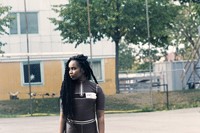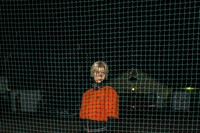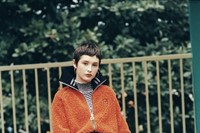How do you speak to Robyn without being uncool? It’s a genuine question – she’s a living, and very young, legend. Especially among the queer community.
Do you ask her about her record company Konichiwa Records, which turns 15 this year? Do you talk about the three – four if you include Bodytalk in both its parts, five if you include the collaboration with Röyksopp, seven if you include Robyn is Here and My Truth – albums that have created such important moments of understanding for so many who feel sad on the dance floor? What about her clothes? That time she ate a banana on stage at V Festival? What about her endlessly brilliant acoustic version of Be Mine! she sung at the Nobel Prize awards ceremony? Or that tattoo you have of her logo on your ankle?
How about her clothing collaboration with Björn Borg and stylist Naomi Itkes, RBN x Björn Borg, which has just landed at Browns? Yes. That’s good. The collection is a gender non-specific exploration of sportswear; sportswear which “you can do your sports in, but that you could also go clubbing in,” Robyn herself explains.
When they started on the collection, Robyn and Itkes set out to explore the styles that influenced them both. Meeting back in 2006 – on the iconic, a word not to be used lightly, Bodytalk album – they have worked together with a great understanding of the style they both grew up in. “Stockholm street style,” is where both their work, and the collection, started – referencing Swedish youth culture, buffalo style, and the things they both wore when they would listen to hip hop and go to raves in separate parts of town.
Across our conversation, Robyn explains how the Swedish welfare system – while still good – has worsened, and that she was looking back to the nostalgia of perhaps a better time for the youth of Sweden when making the collection. She has faith in the youth though. We also discussed what makes a good song, how making Honey changed her, and what she wants people to feel when they listen to her music. I was also desperate to ask her what her final three course meal would be, but alas as legends do, she had to go: cutting what should have been 50 quickfire questions to 35 semi-quickfire questions. No matter, because when we see her Honey tour she’s certain to answer so many more.
1. How are you today?
I’m well, yeah. It’s a sunny day in Stockholm.
2. What was the name of the first song you ever wrote?
It was called In My Heart, and I wrote it when I was 11 years old.
3. Can you remember any of the lyrics?
Yeah, it’s recorded on my first album.
4. When are you most comfortable?
When I’m with my friends, I think, when I’m with people that I love.
5. What do you need in order to create?
I think it’s different every time. It really changes – it’s an instinct, or something that happens that makes me inspired and I think if I knew what made me inspired that’s all I would do. I think it’s a very complicated process, and something that takes a long time to understand. I think that, actually, most of my time goes on trying to figure out how to get myself into a space where I feel inspired. But I don’t know what that is yet. It’s a lot of different things that are very hard to explain.
“[The first song I wrote] was called In My Heart, and I wrote it when I was 11 years old.” – Robyn
6. It changes?
Yeah, it changes. Just like everything. I couldn’t say one or two things that I need [in order] to create. Inspiration I would say – but inspiration is a fleeting mood.
7. What’s more important: music or people?
I don’t wanna choose. I don’t feel like I should I have to. And that’s a good thing.
8. What possession do you treasure the most?
Possession as in a material thing? My body.
9. What’s your favourite lyric ever?
There’s so many. But – [hums a melody] – I think the lyrics for Running Up That Hill by Kate Bush are beautiful, some of my favourite lyrics.
10. Do you spend more time writing or singing?
I think I do quite a lot of both in certain periods. And in some periods I don’t sing or write, which is usually not something that I want to do. But when I’m working a lot around a record release, or something, there’ll be periods when I’m not writing or creating or making music at all, which is really boring. But I don’t know, I wouldn’t be able to give you any numbers there.
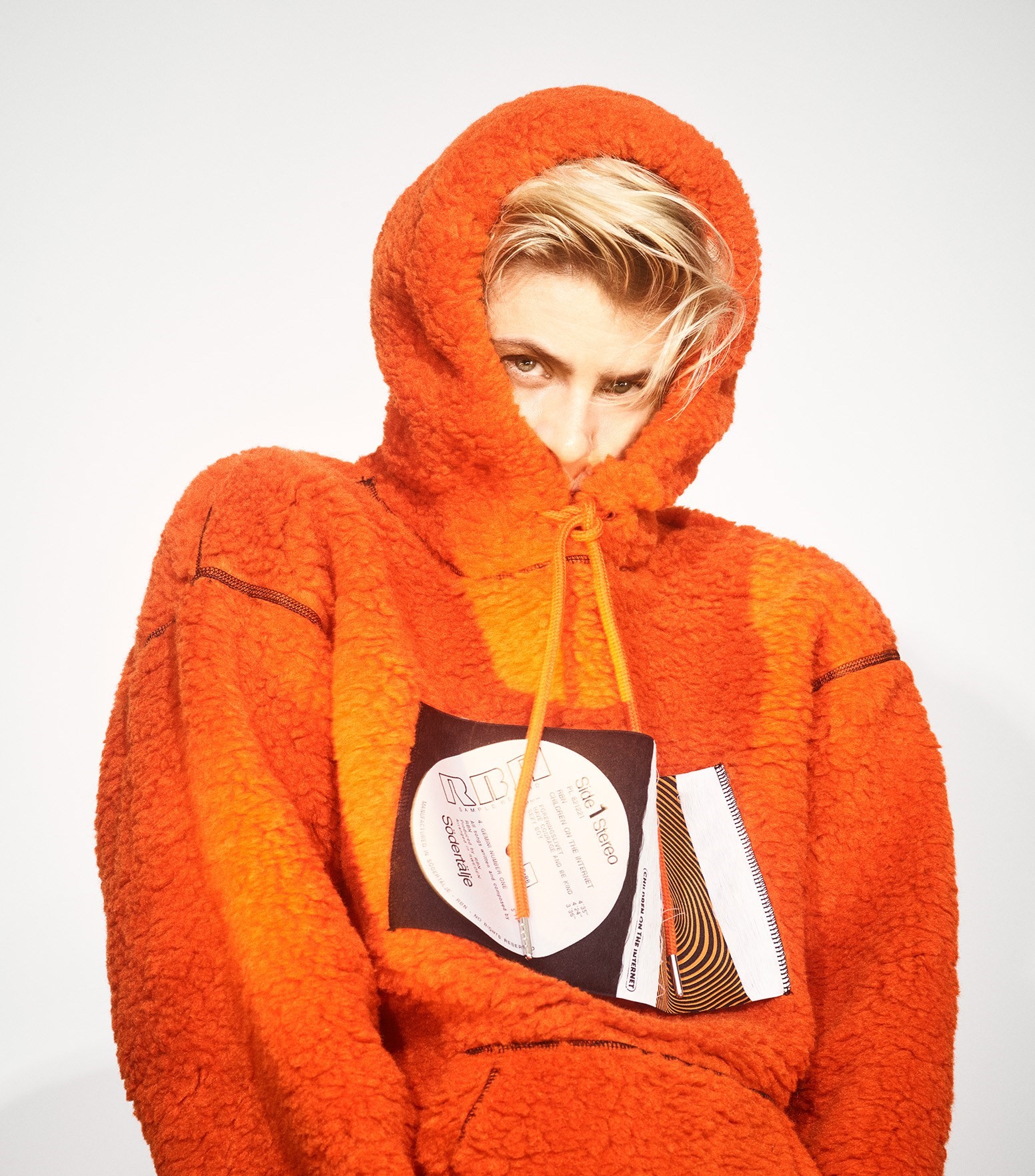
11. How would you define a good song?
Well I think that a good song has – usually – a rhythm that somehow provokes a feeling in people. And I would say that the melody is important as well, but the rhythm and the rhythm of a melody is almost more important than the actual notes. A good rhythm. Vocal, words, instrumental.
12. Is there such a thing as a bad song?
Yes. There are many bad songs.
13. What’s the best thing somebody ever said about your music?
That it means a lot to them. And I hear that quite a lot at the moment from my fans, actually, because I’m touring and so I’m seeing them and people tell me what my music means to them, which is really amazing every time it happens. It’s special, and I feel like when I release music it’s not really mine – sure, it’s mine – but when people listen to it, whatever people feel, it’s because of their own emotions and their own life and their own experiences, and so them sharing that with me is very nice.
14. A two-way relationship?
Well I think at that point it’s almost them doing the work. I’m not doing much.
15. When you write, who are you writing for?
I don’t know. The universe, maybe.
“To me Prince is the best performer that’s ever lived” – Robyn
16. What’s the worst thing about music today?
The worst thing? Today? I think it’s really hard to put all the music that’s made at the moment into one category and judge it from that one perspective. I think there are so many different kinds of artists practising at the moment, so I think it’s impossible to put one kind of analysis on it...
17. Are you happier in one place, or on the road?
I’m happier in one place. Being on the road is really hard work. It’s like camping, which is great to do for a couple of days, but camping for two years is hard work. But I love playing shows, and it’s worth it. It’s maybe not like the most healthy environment to be in. So I guess it depends on what happy is, but I’m definitely calmer when I’m at home.
18. What can we expect from the Björn Borg collaboration?
Well you can expect a very focussed and little collection, based on many of my favourite pieces of clothing that I have in my wardrobe. And also a lot of references to the archive that Björn Borg has, of old sportswear, that he used to wear. It’s kind of like we’ve made something that you can do your sports in, but that you could also go clubbing in. And I think that’s how I always wear sportswear – ever since I was a kid – and I was going to raves and listening to hip hop music, and all these things. And these things were mixing in the clothes that I was wearing. And I think it’s a reference to that, and a reference to how I grew up. Because clothes signal your identity as a young person.
19. Style tribes?
Exactly. I think as a teenager those things are really intersecting, the things that you like to do with your body – like dancing or sports – but also the music you’re into and the friends you have and the things you’re interested in and the kinds of pop culture that you’re interested in. And you know dressing that way, and feeling that way and absorbing the world and culture in that way, really has shaped me, and the way that I started absorbing things as a teenager shaped me too. Stockholm street culture was a big part of that, it’s still very much a part of who I am, and how I think about things. And also Naomi [Itkes], who I made the collection with, we grew up in Stockholm around the same time and so we thought a lot about that, what that was like, growing up in Sweden in the 80s and the 90s, the things we used to do, the music we listened to, and the kind of society we grew up in, which was very different to what it is now. Sweden still has a really good welfare system, but back then it was even better. And there was a sense of community around youth centres, and sports clubs and real initiatives from the Swedish government, and we were still a part of that in my generation, so there’s something romantic about us looking back at another time.
20. Do you think that that community focus still exists elsewhere for the youth, in a different way?
I think it will always exist, because young people are smart and they are open and they want to connect. But the difference is when you put the responsibility of a safety net for young people on commercial companies or society as a whole.
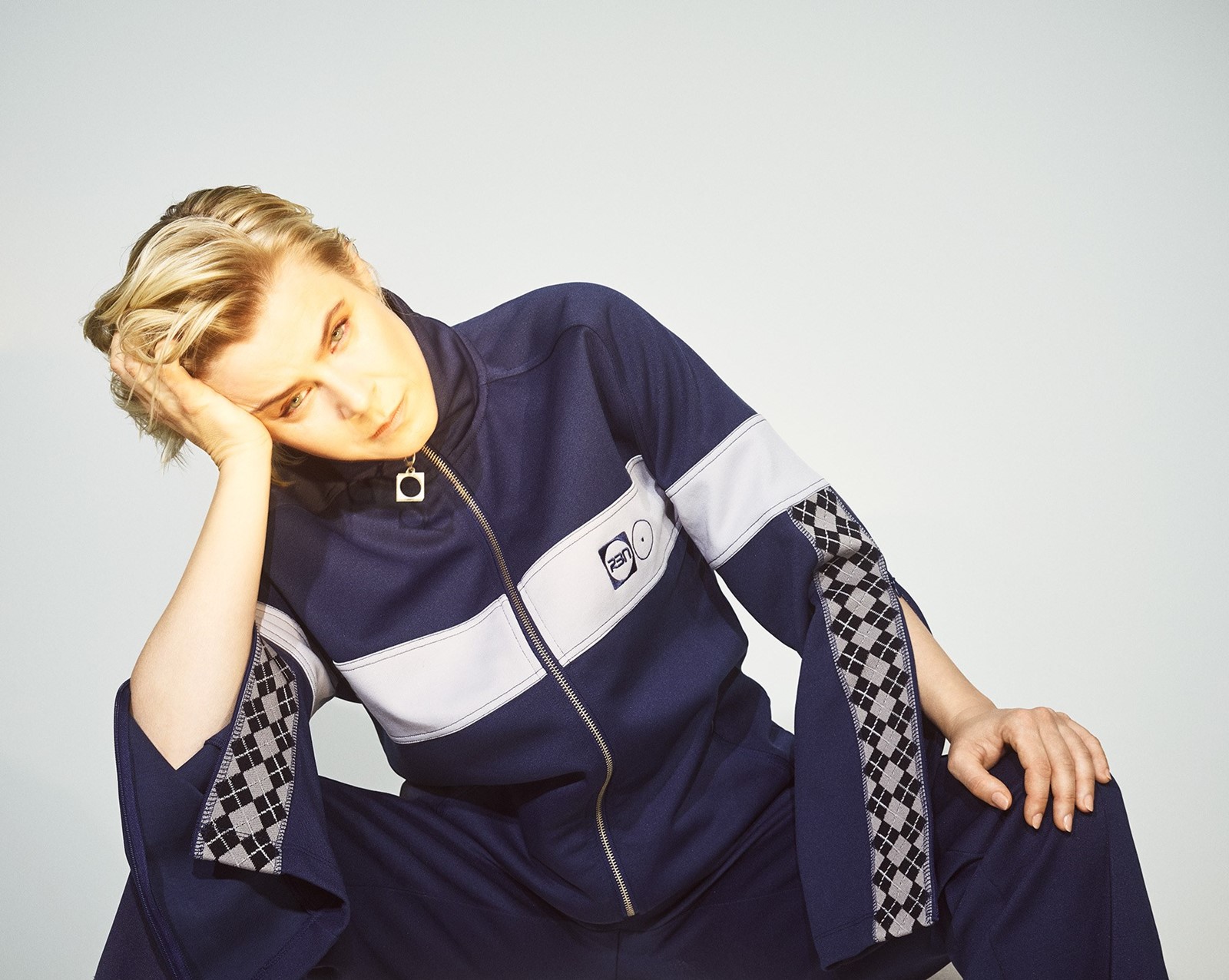
21. Why did it need to be gender non-specific?
It didn’t need to be, but it just happened that way. I was always a tomboy growing up, and I think what’s cool about now is that you can be a feminist and have pink hair. Which wasn’t the case when I was a kid. Like for me being a tomboy was protection, it was a feisty way to show who I was. And so I think you can be whatever you want: you can be girly or not girly, or whatever, but for me – when me and Naomi started making the clothes – we just realised that this is something everyone should be able to wear. Why not? It was a natural process for both of us to make it that way.
22. What do you want people who wear the clothes to feel?
Comfortable, and cool. I think that’s really important. And hopefully a little bit sexy, as well, but I think it’s, you know, very relaxed. The pieces are very relaxed and comfortable.
23. Well is there anything sexier than being comfortable?
Exactly! Can’t argue with that.
24. What do you hope people feel when they listen to your music?
Anything that they want. I’ve made the music from my perspective, and where I was when I wrote those songs, and it’s not up to me to decide how anyone else will feel. But I think a good song sketches something out which pushes buttons in people. And a good song does that in a way where you can still access your own emotions while you’re listening to the music, and I think that’s what’s amazing about music. It’s a language that transcends all kinds of cultures and languages, and I remember listening to music as a kid and feeling like I knew the person that wrote the music, even though I’d never met them. I felt like I knew exactly what they had gone through. Or, I recognised a feeling that I had, that I wasn’t able to put my finger on or wasn’t able to put into words, and I would hear a Kate Bush song or a David Bowie song or Prince song and I would be like ‘woah’ I know that feeling, I just didn’t know to explain it to anyone. It should be open, so that people can access their own emotions.
25. How did making Honey change you?
I think I was changing while I was making Honey, and that’s what the song is about – finding a calmer, more sensual place. Sensuality in all kinds of ways – of course how I related to my body, and how I related to my sexuality, but also how you approach anything. Inspiration and how to feel good. And that was a new thing for me when I wrote that song.
“I would tell my younger fans to relax. Enjoy life, don’t be so hard on yourself” – Robyn
26. What song makes you want to dance?
Wow, so many different songs. But right now I would say... I’m just getting my Spotify out because I have to get the title right... right now it’s a song called Somethings More Painful Than Others by Planningtorock.
27. Who’s the best artist you’ve seen live?
I would say Prince but I don’t think I saw him at his prime. I saw him three times, but I was never able to catch him during the Sign o’ the Times tour, but it was a little bit later. But to me he’s the best performer that’s ever lived. Although I would say that the best show I’ve ever seen was a Grace Jones show that she did in Sweden in 2005.
28. What’s your favourite thing about Sweden?
There’s many things I like about Sweden, and some things I don’t like. But I would say that the best thing about Sweden is that there’s a sense of modesty – and I don’t mean in a limited, confined way. But there’s some common sense here that I think is really good, and makes life easier for people.
29. What’s your fondest memory on the road?
I had my sister with me on the road when I did the four first shows of this tour, last week. And it was great to have her with me. She’s amazing.
30. How is tour going?
Yes, it’s going really well, and it’s still early days. We’re still figuring things out. We’re still polishing things and changing things, but it feels really good already. I’m happy.
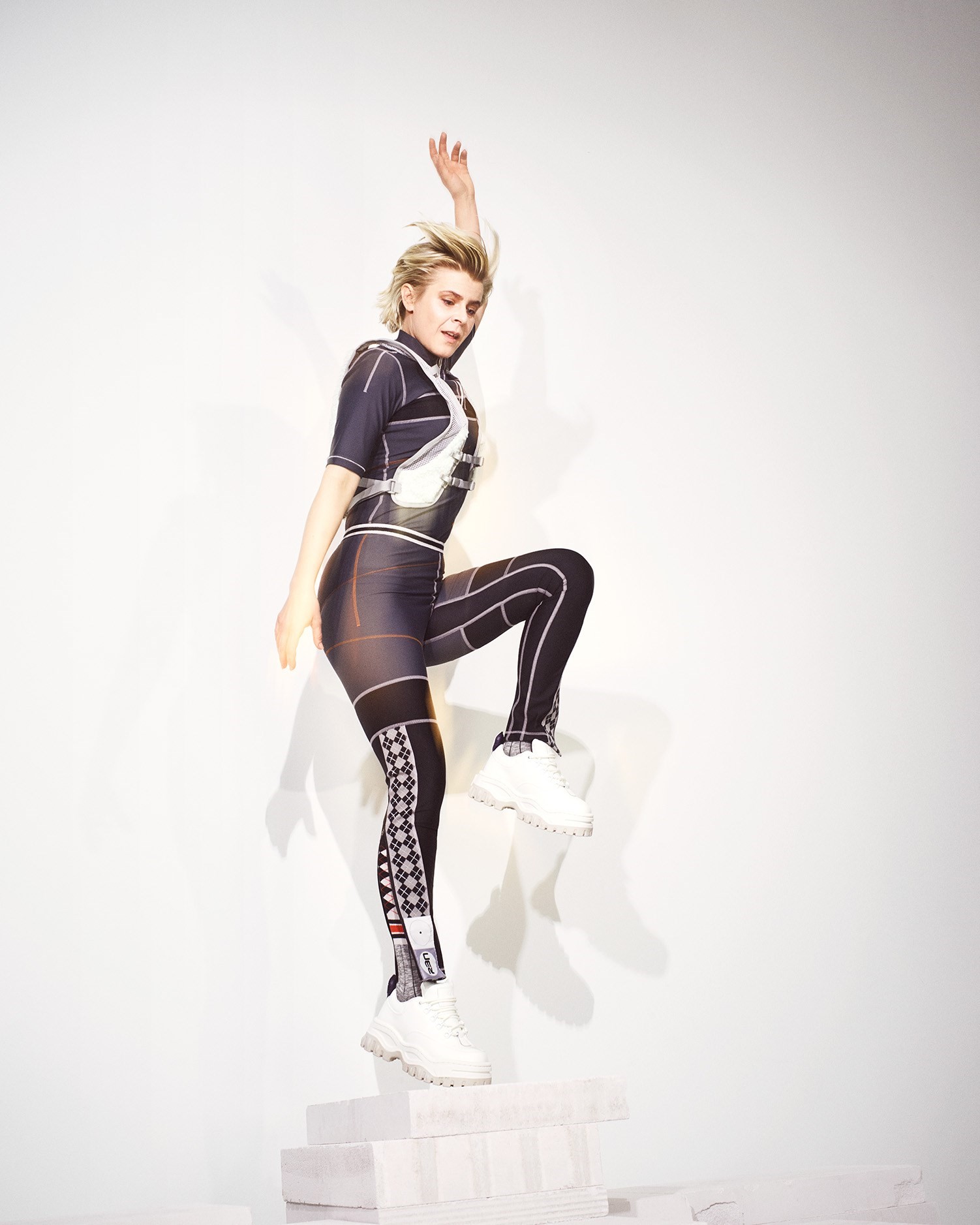
31. What are you most proud of?
I’m proud of my record company. I’m happy that I started it when I did. I started Konichiwa Records in 2004. 15 years ago.
32. If you could tell your younger self one thing, what would it be?
Relax.
33. If you could tell your younger fans one thing what would it be?
The same thing. Enjoy life, don’t be so hard on yourself.
34. Can you remember the first time you ever performed? What did it feel like?
I can’t, because I think I always did. I was probably in my jump rope in my grandparents living room lip-syncing to some pop song on the radio.
35. What makes a legend?
I dunno. I’m not interested in that. Other people, how much they’ve meant to other people. That’s what makes someone a legend. I don’t know. And I don’t know if that’s true.
RBN x Björn Borg by Robyn is available in-store and online at Browns now.

